Related Research Articles
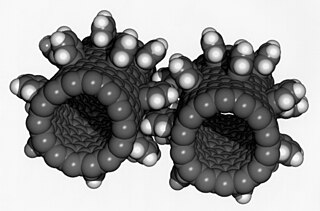
Nanotechnology was defined by the National Nanotechnology Initiative as the manipulation of matter with at least one dimension sized from 1 to 100 nanometers (nm). At this scale, commonly known as the nanoscale, surface area and quantum mechanical effects become important in describing properties of matter. The definition of nanotechnology is inclusive of all types of research and technologies that deal with these special properties. It is therefore common to see the plural form "nanotechnologies" as well as "nanoscale technologies" to refer to the broad range of research and applications whose common trait is size. An earlier description of nanotechnology referred to the particular technological goal of precisely manipulating atoms and molecules for fabrication of macroscale products, also now referred to as molecular nanotechnology.

Nanochemistry is an emerging sub-discipline of the chemical and material sciences that deals with the development of new methods for creating nanoscale materials. The term "nanochemistry" was first used by Ozin in 1992 as 'the uses of chemical synthesis to reproducibly afford nanomaterials from the atom "up", contrary to the nanoengineering and nanophysics approach that operates from the bulk "down"'. Nanochemistry focuses on solid-state chemistry that emphasizes synthesis of building blocks that are dependent on size, surface, shape, and defect properties, rather than the actual production of matter. Atomic and molecular properties mainly deal with the degrees of freedom of atoms in the periodic table. However, nanochemistry introduced other degrees of freedom that controls material's behaviors by transformation into solutions. Nanoscale objects exhibit novel material properties, largely as a consequence of their finite small size. Several chemical modifications on nanometer-scaled structures approve size dependent effects.
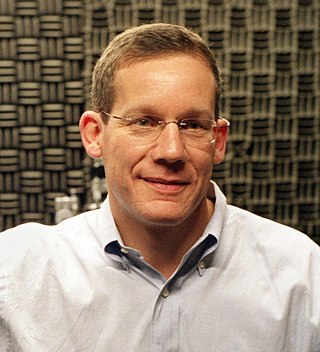
Charles M. Lieber is an American chemist, inventor, nanotechnologist, and writer. In 2011, Lieber was named the leading chemist in the world for the decade 2000–2010 by Thomson Reuters, based on the impact of his scientific publications. He is known for his contributions to the synthesis, assembly and characterization of nanoscale materials and nanodevices, the application of nanoelectronic devices in biology, and as a mentor to numerous leaders in nanoscience.
The history of nanotechnology traces the development of the concepts and experimental work falling under the broad category of nanotechnology. Although nanotechnology is a relatively recent development in scientific research, the development of its central concepts happened over a longer period of time. The emergence of nanotechnology in the 1980s was caused by the convergence of experimental advances such as the invention of the scanning tunneling microscope in 1981 and the discovery of fullerenes in 1985, with the elucidation and popularization of a conceptual framework for the goals of nanotechnology beginning with the 1986 publication of the book Engines of Creation. The field was subject to growing public awareness and controversy in the early 2000s, with prominent debates about both its potential implications as well as the feasibility of the applications envisioned by advocates of molecular nanotechnology, and with governments moving to promote and fund research into nanotechnology. The early 2000s also saw the beginnings of commercial applications of nanotechnology, although these were limited to bulk applications of nanomaterials rather than the transformative applications envisioned by the field.
Nanoelectronics refers to the use of nanotechnology in electronic components. The term covers a diverse set of devices and materials, with the common characteristic that they are so small that inter-atomic interactions and quantum mechanical properties need to be studied extensively. Some of these candidates include: hybrid molecular/semiconductor electronics, one-dimensional nanotubes/nanowires or advanced molecular electronics.
Nanocircuits are electrical circuits operating on the nanometer scale. This is well into the quantum realm, where quantum mechanical effects become very important. One nanometer is equal to 10−9 meters or a row of 10 hydrogen atoms. With such progressively smaller circuits, more can be fitted on a computer chip. This allows faster and more complex functions using less power. Nanocircuits are composed of three different fundamental components. These are transistors, interconnections, and architecture, all fabricated on the nanometer scale.

A biointerface is the region of contact between a biomolecule, cell, biological tissue or living organism or organic material considered living with another biomaterial or inorganic/organic material. The motivation for biointerface science stems from the urgent need to increase the understanding of interactions between biomolecules and surfaces. The behavior of complex macromolecular systems at materials interfaces are important in the fields of biology, biotechnology, diagnostics, and medicine. Biointerface science is a multidisciplinary field in which biochemists who synthesize novel classes of biomolecules cooperate with scientists who have developed the tools to position biomolecules with molecular precision, scientists who have developed new spectroscopic techniques to interrogate these molecules at the solid-liquid interface, and people who integrate these into functional devices. Well-designed biointerfaces would facilitate desirable interactions by providing optimized surfaces where biological matter can interact with other inorganic or organic materials, such as by promoting cell and tissue adhesion onto a surface.
The following outline is provided as an overview of and topical guide to nanotechnology:
Green nanotechnology refers to the use of nanotechnology to enhance the environmental sustainability of processes producing negative externalities. It also refers to the use of the products of nanotechnology to enhance sustainability. It includes making green nano-products and using nano-products in support of sustainability.
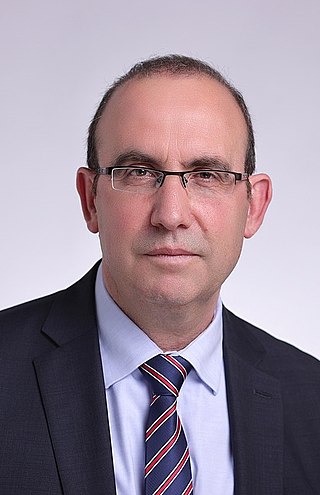
Ehud Gazit is an Israeli biochemist, biophysicist and nanotechnologist. He is Professor and Endowed Chair at Tel Aviv University and a member of the executive board of the university. In 2015, he was knighted by the Italian Republic for services to science and society. He was recently elected as the 2023 International Solvey Chair in Chemistry, a position that was previously held by 15 of the top world scientists including three Nobel laureates.
Hongkun Park is Mark Hyman Jr. Professor of Chemistry and Professor of Physics at Harvard University. He received his BS in chemistry at Seoul National University in 1990, and his PhD in physical chemistry at Stanford University in 1996 under Richard Zare. From 1996 to 1999 he was a postdoctoral fellow at Lawrence Berkeley National Laboratory under A. Paul Alivisatos and Paul McEuen.
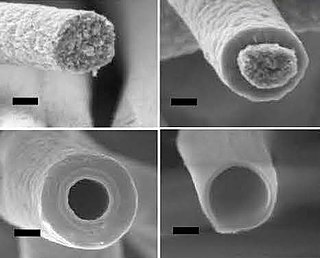
Silicon nanotubes are nanoparticles which create a tube-like structure from silicon atoms. As with silicon nanowires, they are technologically important due to their unusual physical properties, which differ fundamentally to those of bulk silicon. The first reports on silicon nanotubes appeared around the year 2000.
Charles R. Martin is an American Distinguished Professor of chemistry at University of Florida. He is a Nanotechnology expert and a pioneer of membrane-based template synthesis of nanomaterials. He is listed as one of the World's Top 100 Chemists of the past decade (2000–2010) by Thomson Reuters. He is also a musician and songwriter in Gainesville, Florida.
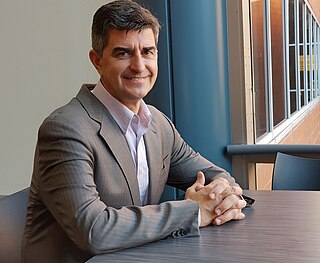
Yury Georgievich Gogotsi is a Ukrainian scientist in the field of material chemistry, professor at Drexel University, Philadelphia, United States since 2000 in the fields of Materials Science and Engineering and Nanotechnology. Distinguished University and Trustee Chair professor of materials science at Drexel University — director of the A.J. Drexel Nanotechnology Institute.
Alan T. Charlie Johnson is an American physicist, professor in physics and astronomy at the University of Pennsylvania. Johnson currently serves as the founding executive editor of AIP Advances and the co-founder of Graphene Frontiers, LLC.
A probe tip is an instrument used in scanning probe microscopes (SPMs) to scan the surface of a sample and make nano-scale images of surfaces and structures. The probe tip is mounted on the end of a cantilever and can be as sharp as a single atom. In microscopy, probe tip geometry and the composition of both the tip and the surface being probed directly affect resolution and imaging quality. Tip size and shape are extremely important in monitoring and detecting interactions between surfaces. SPMs can precisely measure electrostatic forces, magnetic forces, chemical bonding, Van der Waals forces, and capillary forces. SPMs can also reveal the morphology and topography of a surface.

Albert Galiyevich Nasibulin is a Russian material scientist recognized for the contributions to synthesis of nanoparticles and carbon nanotubes. Presently he occupies the full professor position at Skolkovo Institute of Science and Technology. He is an author of over 400 scientific publications; his H-index is 67. He bears the title of a Professor of the Russian Academy of Sciences. A leading academic platform Research.com included Nasibulin among the top material science researchers.
This glossary of nanotechnology is a list of definitions of terms and concepts relevant to nanotechnology, its sub-disciplines, and related fields.
Elisa Riedo is a physicist and researcher known for her contributions in condensed matter physics, nanotechnology and engineering. She is the Herman F. Mark Chair Professor of Chemical and Biomolecular Engineering at the New York University Tandon School of Engineering and the director of the picoForce Lab.
Jun Li is a distinguished professor of chemistry at Kansas State University known for his research in nanoscience and nanomaterials. He is a fellow of the Royal Society of Chemistry, the National Academy of Inventors, and the International Association of Advanced Materials.
References
- ↑ abstract of chapter
- ↑ announcement of appointment of new chair of BYU chemistry department
- ↑ Becerrill was a Ph.D. student at BYU with an undergraduate degree from UNAM who is now a professor at BYU-Idaho.